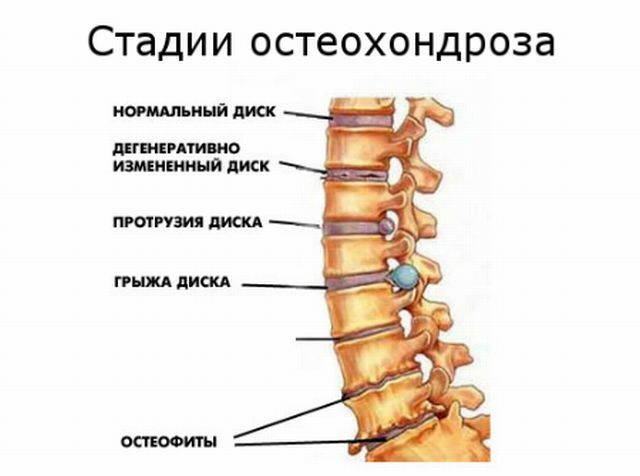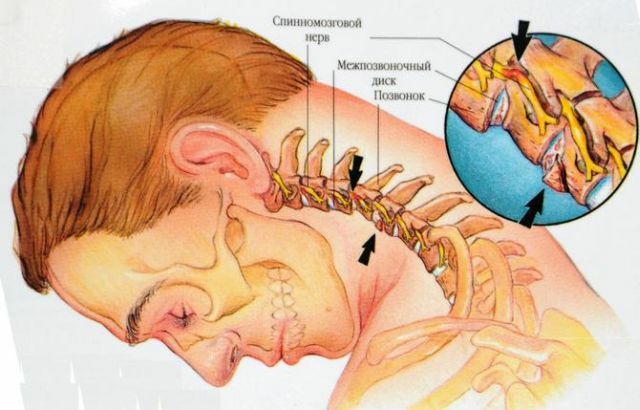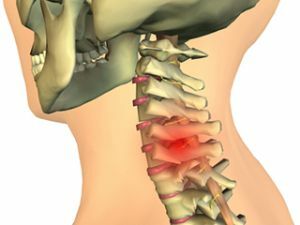 One of the most common and serious diseases to date is chondrosis. Among all its types, the chondrosis of the cervical spine is most often met - degenerative-dystrophic lesion of the intervertebral discs of the department( chondrosis) with further involvement of articular cartilages, vertebrae, ligaments in the process of destruction and alteration of the tissues, and in severe disease and muscles( osteochondrosis).
One of the most common and serious diseases to date is chondrosis. Among all its types, the chondrosis of the cervical spine is most often met - degenerative-dystrophic lesion of the intervertebral discs of the department( chondrosis) with further involvement of articular cartilages, vertebrae, ligaments in the process of destruction and alteration of the tissues, and in severe disease and muscles( osteochondrosis).
The small size of the cervical vertebrae, their proximity to each other and considerable mobility, provides for increased loads on them and discs between them, which contributes to their change and regeneration.
For many years, the symptoms of neck chondrosis have been considered a manifestation of old age and weariness of the musculoskeletal system, since every second person has 50 years of this ailment. With age, the percentage of such patients increases.
Currently, his rejuvenation has been fixed, and the disease is diagnosed in 20-year-olds and slightly older.
Contents of the article
- Contents of the article
- How the disease develops in its course
- The main destruction factors of
- What are the manifestations of
- disease Headaches like litmus of chondrosis
- Medical tools and methods for the treatment of
- disease Medications used
- Traditional medicine
- Methods of prevention
How does the disease develop in hercurrent
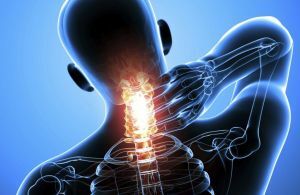 Cervical chondrosis is a disease that occurs with the progression of degenerative-dystrophic changes in the spine and dangerous consequences. In the initial period of the disease, destructive changes begin in the intervertebral discs, which are increasing.
Cervical chondrosis is a disease that occurs with the progression of degenerative-dystrophic changes in the spine and dangerous consequences. In the initial period of the disease, destructive changes begin in the intervertebral discs, which are increasing.
They lose their supporting properties, elasticity and softening function, flatten. The vertebrae become unstable, the muscles tense to hold them.
There is a retraction( displacement), due to which the blood vessels feeding and supplying oxygen to the head  brain and the nerve endings are jammed.
brain and the nerve endings are jammed.
When vertebrae are involved in the process of degeneration, bone growths appear on their body or processes, osteophytes, which also participate in their compression. Because of this, nerves lose their functionality and become inflamed, causing neuralgia - severe pain. They lead to loss of ability to work, sleep disorders and deterioration of well-being.
In severe cases, loss of sensitivity of the facial and scalp, neck, upper limbs. At the same time, destructive processes in the cervical spine are irreversible.
The severity of chondrosis of the neck is divided into 4 main stages:
- The destruction and changes in the intervertebral discs of the in the initial stage is manifested in the instability of the vertebrae of the department.
- The pelvic nucleus tends to break out beyond the fibrous ring of the disc, squeezing and pulling it. The protrusion is formed without rupturing the ring, which is the beginning of the development of the intervertebral hernia. The gap between the vertebrae decreases because of the thinning of the disc, they shift. There are pain symptoms - the result of inflammation of the pinched nerves.
- The nucleus breaks through the ring and forms the vertebral hernia .In this case, the deformation of the cervical spine is aggravated.
- There is a growth of osteophytes on the spine , which is characterized by the restriction of movements and severe pain in this case. Pain syndrome when trying to turn, tilt or rotate the neck is accompanied by dizziness with attacks of nausea.
The causes and severity of the course of the disease are different, but its peculiarity and unpredictability is that active people who are engaged in manual labor are also sick and move a lot.
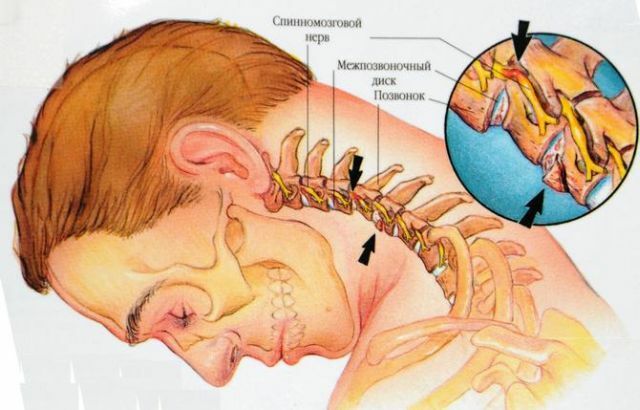
The main destruction factors of
There are many causes of the disease and provoke its progression, but the medicine calls the following main ones:
- diseases of the spine with destruction and changes in its structures( arthritis, arthrosis);
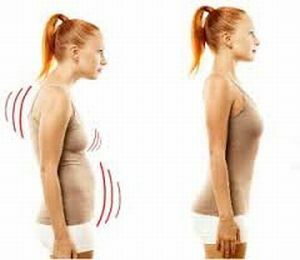
- curvature of the spine in various projections( scoliosis, kyphosis, lordosis);
- age changes in the spine;
- spine trauma;
- weakness of neck muscles, ligament disease;
- hereditary factor;
- physical overload associated with professional activities or sports;
- sedentary work and not an active enough way of life;
- vascular disease;
- infection and intoxication;
- prolonged nerve stress;
- metabolic disorder, obesity;
- is a significant hypothermia.
Specific reasons are established during the examination of the patient and the diagnosis.
What are the symptoms of
? The initial stages of the cervical chondrosis have no signs, they manifest themselves at a time when the destruction of the intervertebral discs and vertebrae, the squeezing and jamming of nerves and vessels that feed the brain.
But at all stages of the pathological process there are common symptoms:
- Pain sensations. Headaches and neck, paroxysmal, different in duration. In the beginning - they are cervico-occipital, then spread to the frontal and temporal part of the head, eyes, ears and become permanent. Minimal loads cause pain in the upper limbs. With the turning movements of the neck, pain may appear in the area of the scapula or in the chest, reminiscent of the heart.
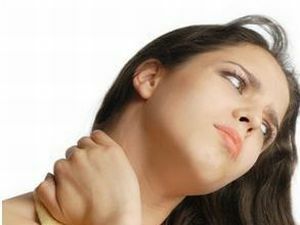
- Stress and hardening of the neck muscles, which limit its movement. With a slight movement, the pain shoots through the neck and hands.
- Reducing the sensitivity of the skin in the neck and arms - a sense of numbness, running creepy, cold. Can be expressed on face and tongue.
- Falling of vision, shroud and points before the eyes.
- Impairment of hearing, ringing and tinnitus.
- Snapping or crunching while the neck is moving.
- Blood pressure jumps.
- Sleep disorder, memory, absent-mindedness, mood swings.
- Vertigo, attacks of nausea and vomiting, sometimes - fainting.
- General weakness, fast fatigue.
Headaches, like the litmus of chondrosis
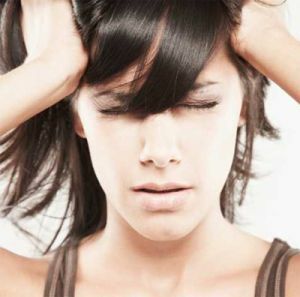 Pressing pain in the head with a feeling of bursting provokes increased intracranial pressure( hypertensive syndrome).
Pressing pain in the head with a feeling of bursting provokes increased intracranial pressure( hypertensive syndrome).
Hypertension occurs as a result of squeezing blood vessels when the vertebra is displaced and blood flow from the brain is disturbed. The pain lasts for hours, it strengthens the movement of the neck and eyes.
Prolonged pain is accompanied by compression of the vertebral artery, displacement of the intervertebral disc, vertebrae or hernia( vertebral artery syndrome).It spreads throughout the head and strong enough that it is poorly removed by anesthetic drugs. At the same time the head turns, signs of visual impairment appear.
Pinching of the posterior spinal nerves with overgrown osteophytes, displaced vertebrae or discs contributes to the onset of occipital migraine. Pulsating pain moves to the anterior and parietal parts of the head. Can be one-sided.
The compression of vertebral nerves, parallel to the vertebral artery, the discs and vertebrae, causes cervical migraine. The neck and neck hurts, the pain is one-sided, gives to the temple and the parietal part of the head. Lasts about 10 hours continuously.
Medical devices and methods for the treatment of
The neurologist appoints a comprehensive treatment for the patient based on the results of the examination. Most often it is carried out on an outpatient basis, in severe cases - permanently.
The complex includes medical treatment, physiotherapy, massage, exercise therapy( physiotherapy exercises).To fix the neck recommend a special collar, for sleep - a hard bed. According to the indications, surgical intervention is performed.
How is cervical chondrosis treated in modern clinics:
- Physiotherapy is performed by electrophoresis, ultrasound, magnetotherapy, diadynamometry.
- Electrophoresis with the help of an electric current effectively introduces medications and quickly delivers them to the affected area.
- The magnetic field of magnetotherapy anesthetizes, cures inflammatory processes, improves blood flow, nourishes and restores destroyed tissues.
- Ultrasound with its waves is anesthetizing and anti-inflammatory.
- Diadynamometry is a pulse therapy that depresses pain.

- is also prescribed paraffin wax applications that relieve pain very well.
- acupuncture and treatment with leeches ( hirudotherapy) are successfully applied.
- For the extension of the vertebrae of the cervical region when the nerves are clamped, uses a special loop( Glysson) .Strengthens the muscles and improves their structure LFK .
- Therapeutic massage activates blood circulation, improves metabolic processes in tissues, relieves muscle spasms, strengthens muscles.
- Surgical treatment is used in cases where the intervertebral hernia reaches a large size, cuts the destroyed part of the disc, which is not restored, the damaged disc or cervical vertebra is replaced with an implant. It is possible to expand the spinal canal surgically.
Used medicines
Apply a complex of tools:
- For severe pain, analgesics are prescribed.
- Non-steroidal anti-inflammatory ( hormone-free) drugs depress inflammation and reduce
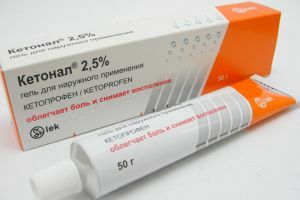 pain. For this purpose, appoint Ketonal, Ketorol, Aertal, Diclofenac, Dexagyl, Piroxicam, Indomethacin, Ibuprofen.
pain. For this purpose, appoint Ketonal, Ketorol, Aertal, Diclofenac, Dexagyl, Piroxicam, Indomethacin, Ibuprofen. - Muscle tension successfully removes antispasmodics - Midokalm, Sirdalud, No-shpa.
- To improve blood flow, vasodilator drugs are used - Trental, Actovegin, Milgama.
- Restore damaged tissue with chondroprotecters .Use Teraflex, Structum, Alflutop.
- For topical application of , in parallel with tablets and injections, ointments and gels with the same effect are used. This is Voltaren, Finalgon, Fastum gel, Dolobene gel, Ketonal, Indomethacin, Chondroxide, Nikoflex, Traumeel C, Teraflex M.
Traditional medicine
During the period of acute chondrosis, rest is prescribed and the patient is treated at home without visiting the clinic. The action of the prescribed medications is aimed at pain relief and treatment of inflammatory processes, restoration of destroyed tissues.
In the complex treatment of cervical chondrosis, the following folk remedies for home use are used:
- horseradish or burdock pack reduces pain for the night;
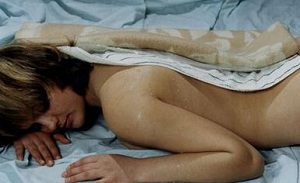
- grated potato in a ratio of 1: 1 with natural honey as a compress helps to cope with inflammation and pain;
- vodka compress well warms, is an anti-inflammatory and analgesic;
- compress from a mixture of aloe juice, dry mustard, a small amount of propolis , filled with vodka or alcohol warms up the affected area, relieves pain;
- rubbing alcoholic tincture of elder into the area of the cervical vertebrae anesthetizes;
- aqueous or alcohol tincture propolis for oral administration and rubbing will ease pain and reduce inflammation;
- also have pronounced anti-inflammatory properties possess tinctures and decoctions of chamomile, sage, elecampane, marigold, seabuckthorn fruit .
Prevention methods
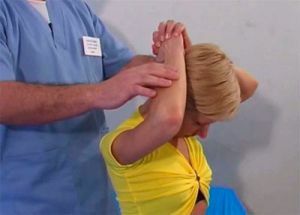 To prevent the onset of cervical osteochondrosis, it is necessary to lead an active and healthy lifestyle. Smoking is prohibited, which causes vasospasms.
To prevent the onset of cervical osteochondrosis, it is necessary to lead an active and healthy lifestyle. Smoking is prohibited, which causes vasospasms.
It is necessary to eat the right healthy food, that is, to limit salted, fatty, smoked, canned, semi-finished and instant food.
Meat and fish are recommended to cook for a couple or bake in the oven. Fresh or grilled vegetables and fruits will provide vitamins, microelements and vegetable fiber. Less sweet and flour in the diet and more useful cereals.
It is necessary to give up bad habits and a soft bed, go in for sports, and especially swimming. Do not allow physical overloads, injuries, prolonged motionless sitting, excess body weight.
Constantly perform gymnastics for the neck, follow the posture. Complete recovery of the chondrosis of the cervical spine is impossible, but it is possible to stop the degenerative processes in it with long-term treatment and patient labor of the patient.

